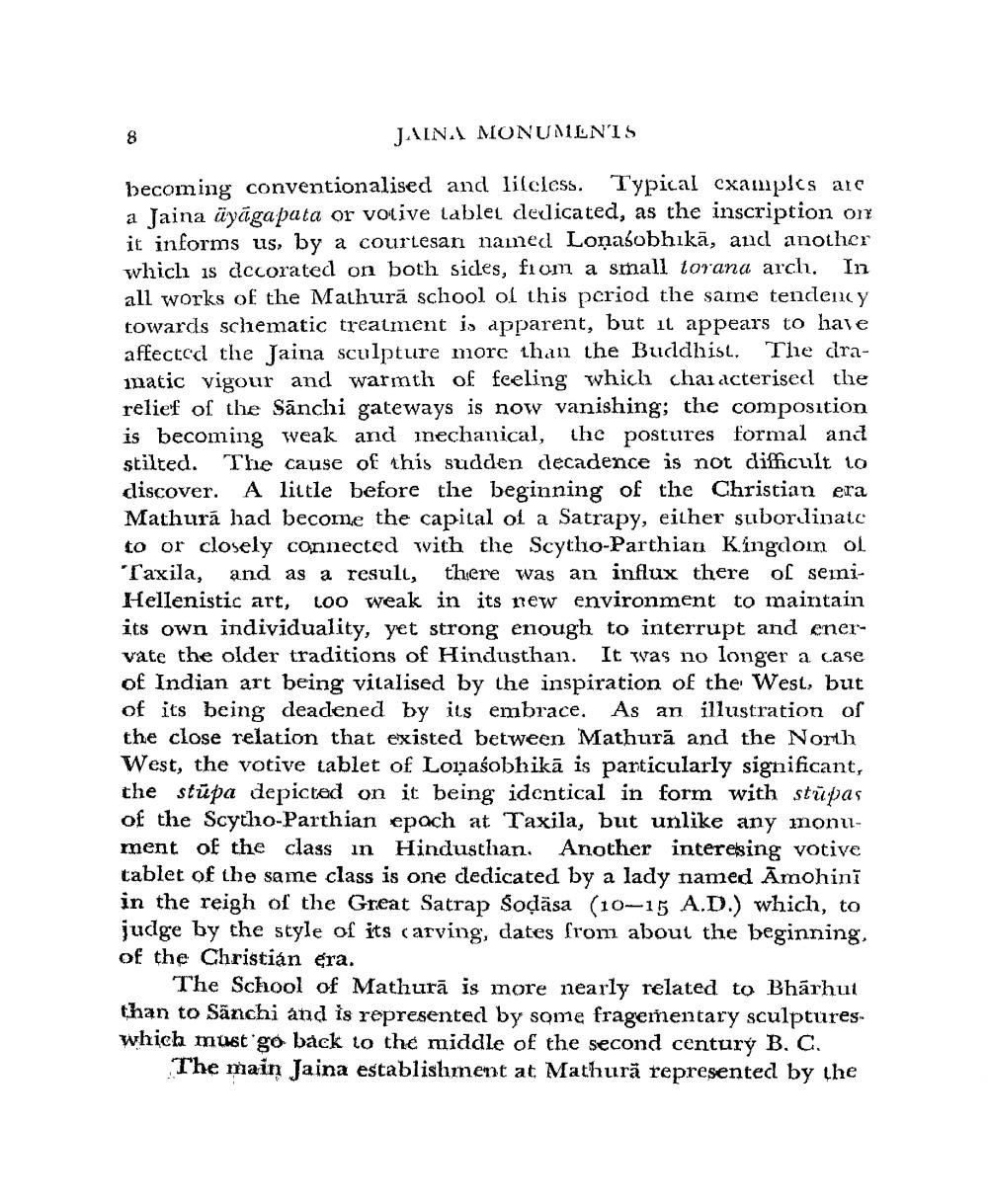________________
JAIN MONUMENIS
becoming conventionalised and lifeless. Typical cxamples are a Jaina āyāga pata or votive tablet dedicated, as the inscription on it informs us, by a courtesan named Lonasobhikā, and another which is decorated on both sides, from a small torana arch. In all works of the Mathurā school ol this period the same tendency towards schematic treatment is apparent, but it appears to have affected the Jaina sculpture more than the Buddhist. The dramatic vigour and warmth of feeling which characterised the relief of the Sánchi gateways is now vanishing; the composition is becoming weak and inechanical, the postures formal and stilted. The cause of this sudden decadence is not difficult to discover. A little before the beginning of the Christian era Mathurá had become the capital of a Satrapy, either subordinato to or closely connected with the Scytho-Parthian Kingdom ol Taxila, and as a result, there was an influx there of semiHellenistic art, LOO weak in its new environment to maintain its own individuality, yet strong enough to interrupt and enervate the older traditions of Hindusthan. It was no longer a case of Indian art being vitalised by the inspiration of the West, but of its being deadened by its embrace. As an illustration of the close relation that existed between Mathurā and the North West, the votive tablet of Lonaśobhikā is particularly significant, the stūpa depicted on it being identical in form with stūpas of the Scytho-Parthian epach at Taxila, but unlike any monument of the class in Hindusthan. Another interesing votive tablet of the same class is one dedicated by a lady named Āmohinī in the reigh of the Great Satrap Sodäsa (10-15 A.D.) which, to judge by the style of its carving, dates from about the beginning, of the Christian era.
The School of Mathurā is more nearly related to Bhārhut than to Sanchi and is represented by some fragementary sculptureswhich must go back to the middle of the second century B. C.
The main Jaina establishment at Mathură represented by the




